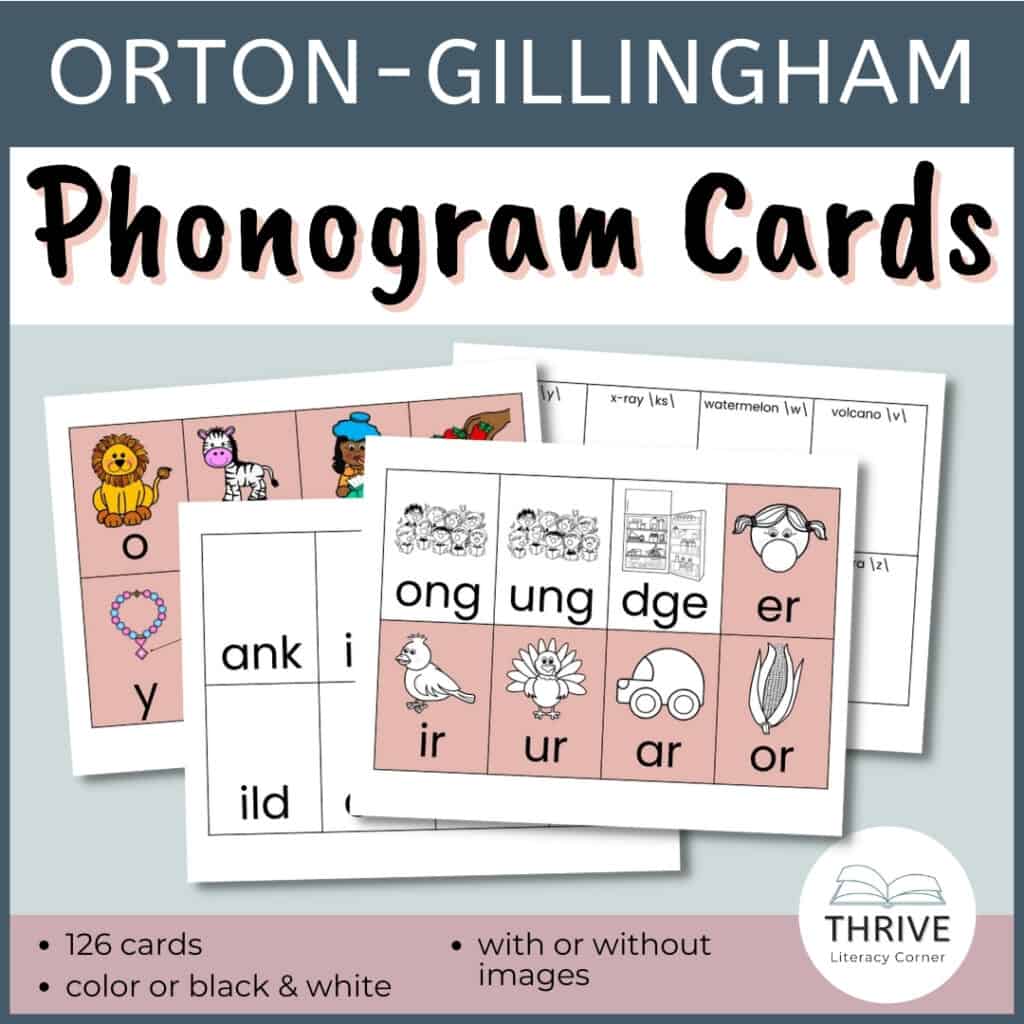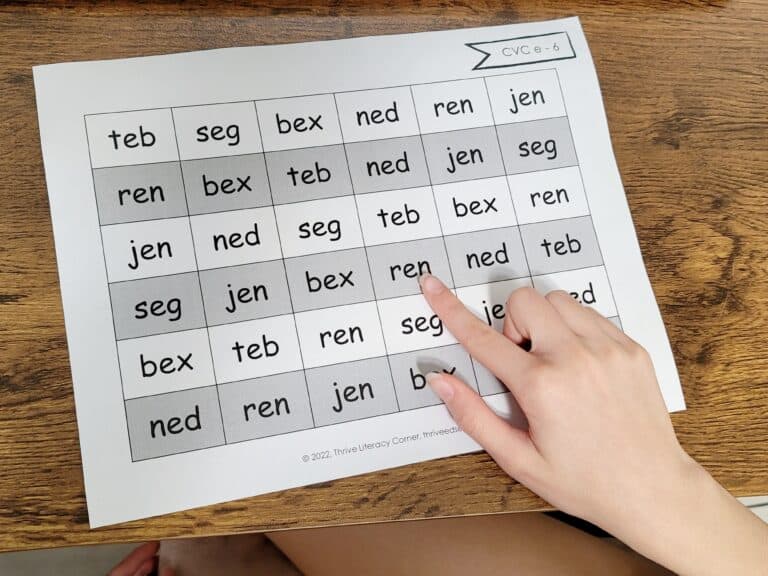Why Systematic Synthetic Phonics Is Best for Dyslexic Students + Freebies!
This post may contain affiliate links, and I will earn a commission if you purchase through these links. Please read the disclosure policy for more details.
Teaching students with dyslexia to read involves very different methods than the traditional reading programs used in most classrooms. Effective phonics instruction is key to remediating reading difficulties and using a systematic synthetic phonics program is best.
But first I’ll go over each type of phonics method to help you see why they are inadequate and how you can modify them if you are required to use one of those methods.
Synthetic Phonics
Synthetic phonics is phonics instruction that focuses on teaching each individual sound and phonogram before having students blend these sounds into words.
It’s how phonics was taught for a long time, but it wasn’t necessarily being implemented correctly.
One common problem with synthetic phonics is adding the uh sound to the end of each letter sound. So for example, the sound for b is /b/ but sometimes people will say /buh/. This can lead to problems when blending the letters b-e-d to /buh-e-duh/.
Another problem is that it is often not taught in a systematic way. And this can lead to frustration and confusion for kids with dyslexia.
With dyslexia, there is often difficulty associating letters with their sounds. Dyslexics tend to struggle with forming visual representations of the sounds they hear and many have poor working memory which requires consistent repetition. Therefore, not using a systematic approach that builds on skills already mastered is a recipe for failure.
Students should learn a group of sounds then decode words using only the sounds they know. From here, they can move on to another group and repeat. All while consistently including practice with the sounds already learned.

Analytic Phonics
The currently popular form of phonics instruction is analytic. And this kind of phonics instruction is not better or worse than synthetic phonics, it is just more confusing for students with dyslexia.
Analytic phonics combines sound units, such as at, ock, ing, and uses analogies of known words to figure out new words. So for example, if a student knows the word bat sounds like /bat/ and ring sounds like /ring/ then they should be able to read the words bing and rat.
Now this works just fine for most students, but for students who struggle with reading such as those with dyslexia, it is extremely confusing. They have not associated the correct sound for each letter so they cannot generalize and read new words in this way.
Systematic Synthetic Phonics
So how do you effectively teach phonics to students with dyslexia? With systematic synthetic phonics.
Systematic synthetic phonics is phonics instruction focusing on teaching the individual sounds in a structured and systematic way. It is like a combination of synthetic and analytic phonics.
With systematic synthetic phonics, you can develop letter-sound associations and practice decoding in a way that ensures students can truly read the texts they are working on. There are no words with sounds they have not learned yet and they continue to build on the sounds they have already learned. There is a precise order to teaching the sounds followed by structured practice and reinforcement.

All the research on teaching phonics to students with dyslexia has come to the same conclusion: explicit and systematic phonics instruction using multi-sensory methods is the most effective. And this can be applied to all struggling readers. In fact, everyone can benefit from learning to read this way so it should be universal.
Some of my favorite multi-sensory phonics programs include Barton, Wilson, and Orton-Gillingham. You could also use Explode the Code and Blast Off to Reading along with multi-sensory methods just as effectively at a fraction of the cost of the other programs.
I also have some mini phonics units which are designed using Orton-Gillingham methods and are multi-sensory. They are low prep and easy to use in a classroom, small group, or one on one. You can see all my products here.
What to do if you do not have the ability to use a multi-sensory systematic synthetic phonics program
I was once in this position. I wish I had known everything I do now.
If you are in a position where you have to use a certain program that does not really align with the most effective methods then you can modify it.
You can add certain activities to make any program multi-sensory. You can adapt teaching methods to make it more systematic too. It won’t be perfect but any modification in the right direction is more helpful for all students.
Here are some methods and activities to modify any phonics curriculum:
- teach sounds in isolation – try your best to teach a group of sounds in isolation and use (or create) decodable texts using only those sounds and others that students already have been explicitly taught
- teach sounds in a certain order – there is no correct order so you can create your own but following an order helps organize the decodable texts and activities you will use with each group of letters
- use air writing, finger tapping, salt/sand trays for writing, color coding, and other visual/tactile writing methods when learning a new sound
- have students say the sound as they write
- play games using the groups of sounds – this is easy with any board game using target words on flashcards which students must read or spell on their turn
- have students highlight/trace the target sound in a specific color as they say the sound as one of the first activities when introducing a new sound

If you’re looking for more tips on teaching students with dyslexia, check out these other posts:
- Multisensory Spelling Strategy
- Reading Strategies for Struggling Readers – Elkonin Boxes
- Multisensory Strategies for B & D Reversals
Want to remember this? Save Why Systematic Synthetic Phonics Is Best for Dyslexic Students to your favorite Pinterest board!












I really found it useful. There are many activities for struggling readers. This article is helpful for me to write my blog. Thank u so much.